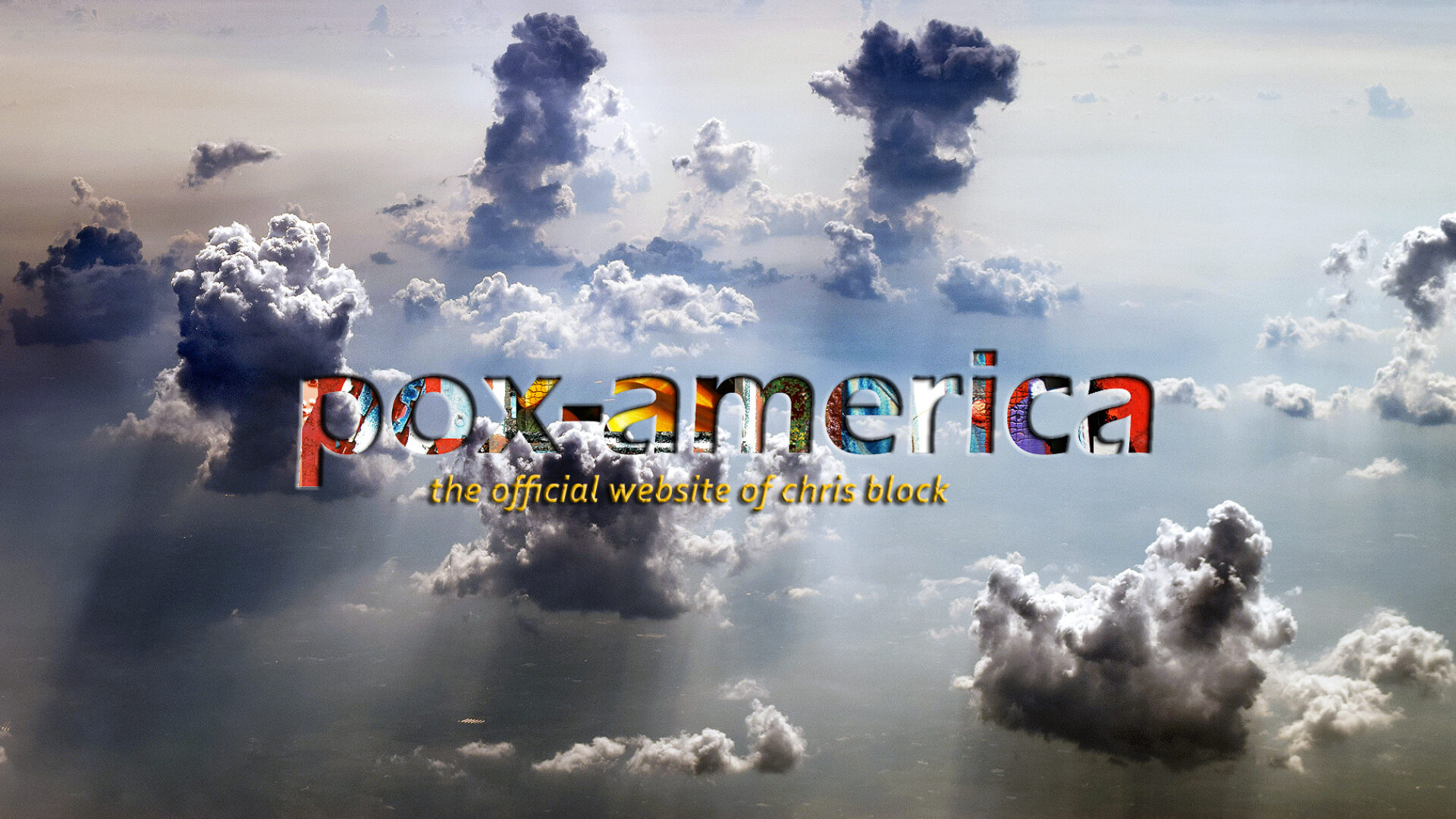PART 1: LEARNING HOW TO LISTEN
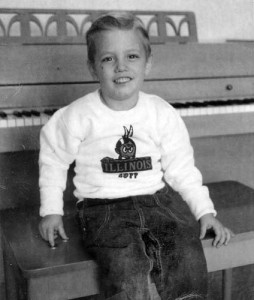
I guess I was always destined to become a musician despite myself. Early photos always seem to feature me with or near an instrument of some sort or other. Before I was even ten, I was given an acoustic guitar on two successive Christmas’s (the second 6-string being a bit of an upgrade from the first), which I soon put to good use learning some very basic cowboy chords via my older brother Bob. I even penned a few very early ditties – and although no recordings exist – I do still have some of my original chord charts and lyrics. (I probably couldn’t find my water bill from last month.) At about eight, I had my first public appearance at a large outdoor family picnic playing a solo rendition of McCartney’s “Yesterday”. Unfortunately, I froze up mid-song and despite the polite approval of the attending adults, my brother Randy – barely a teen himself – was quick to point out deficiencies in both my voice and performance. It would be nearly two decades before I would sing again in public.
Yet, even though my brother may have temporarily stunted my performance ambitions, that same brother was in fact instrumental in introducing me to the world of popular music. I quickly became a young fan of The Who, and the increasingly adventurous releases from the Beatles. I remember being frightened out of my wits by “Revolution 9″ – yet completely enthralled by it. Likewise, my sister Jan – who mainly bought movie soundtracks – had brought home “2001: A Space Odyssey”. The music of Ligeti and Khachaturian was like nothing I had ever heard and I don’t think it’s much of a stretch to say that it was a pivotal moment in expanding my young brain’s concept of harmony and tonality.
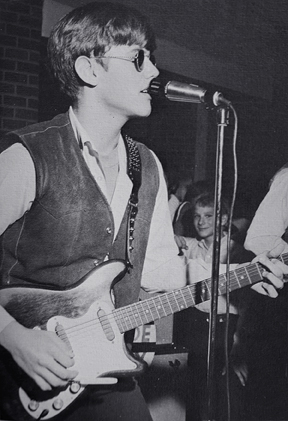
Not too long after, Randy, who was also a guitarist, began to play in a band called The West Side Monopoly, which would also make a strong early imprint and expose me for the first time to a curious four-string instrument called an electric bass.
When my parents bought a Wurlitzer organ (they had considered a Hammond, but it fell far short as a presentable piece of living room furniture) they quickly set up some rudimentary lessons for both me and my sister (who already played piano). I wasn’t all that interested in the lessons, but there were some keyboard textures I was growing fond of – particularly drones – the pulsing of adjacent notes and the rich tones of the bass pedals. A few years later, I would also attempt private piano lessons, but felt patronized when my well-meaning teacher wanted to teach me fifties style “rock & roll” instead of the classical approach many of my new-found “progressive” role-models were showcasing. Of course, rather than voicing my concerns with the instructor, I merely started ditching the lessons. Not a particularly auspicious beginning for a serious musician! So, by the end of sixties, I had tried both guitar and organ… and more or less abandoned both.
Which left only drums.
I knew I wanted to play drums because I had all the latest glossy catalogs. Besides, all drummers did was play big flashy solos – how hard could it be? So first, we put together a neighborhood band. And when I say band, I mean about 5 or 6 or us – not one of which had any real musical ability or even owned a proper instrument. But we came up with a name (“Panther”), got some cardboard and markers and designed a poster. What else did we need? (Little did we know this would be become standard industry practice a few decades later.)
The most significant member of this very short-lived project was a recent transplant from Virginia named Scot Ashley. We became friends, watched severely edited Super-8 classic horror films on Scot’s tiny plastic movie projector, discussed existential philosophy (though we didn’t know it was called that at the time) and soon began to plot our first real band. Of course, that meant we’d each have to learn to actually play an instrument. Scot, who had some previous training on clarinet, decided on guitar, and I stuck with the drums. Scot purchased a red Kingston electric, a small amp and a fuzz box. I set up some cardboard boxes, vinyl pillows and bought a pair of heavy drumsticks.
We started out writing our own songs (I wrote the lyrics) and we called ourselves Waxheart. As Scot got better, we began to add a few covers, including the Led Zeppelin version of ‘Babe I’m Gonna Leave You” and Alice Cooper’s “Eighteen”. Scot played and sang while I bashed around on the boxes and pillows to little avail. Shortly after, Scot met an actual drummer, Mark Usa, who not only owned an real drum set, but knew how to play structured beats! Mark joined, along with another neighborhood guitarist, and I switched to a kind of rhythm bass – actually a real cheap yellow spray-painted electric guitar (long since destroyed) that had only the four lowest strings on it. As I started to learn the fundamentals, it became obvious that I was going to need a real bass – and in the thick conservative aura of early 70’s suburbia, a golden opportunity arose! I had recently begun to grow my hair long, and my parents offered to buy me a bass guitar in exchange for a standard haircut. Hence I got my very first sunburst EBO-style Kay bass – along with a small Peavy TNT amp and a Mel Bay instructional on bass guitar. (I believe I still have the book somewhere upstairs – and I still haven’t a clue what any of it means.) Eventually, my hair grew back.
Despite the new gear, Scot was advancing much quicker than I. Feeling overwhelmed, I soon split away to attempt my own first conceptual project, more in the vein of many of the imported albums I’d recently purchased on the German Ohr, Metronome and Brain labels. The result was a duo called Orthanc (I did mention this was the 70’s, didn’t I?) comprised of myself and Chris Wrobel, both us on bass guitar and effects. It too, went nowhere, but was important in that it was the first time I experimented with distortion and other types of sound manipulation. I was also starting to get a real feel for competently learning songs from albums, and began playing with a few guitarists I had met at high school – most notably DeWitt Hansen and Jon Medak. Finally, on the 22nd of March, 1975, at a surprisingly raucous outing at the Northbrook Field House, I officially played my first paying gig with Medak and another high school acquaintance, drummer Bruce Akers. This was Quadra. We didn’t have vocals, and often played unintentionally hyped-up covers of Deep Purple, Black Sabbath, a new fairly obscure band named Rush, and our own three-chord lone original called “World Peace”. Mike Greenlees of Tar, who heard a tape of this performance years later, maintains that we all but invented hardcore! (Ironically, or perhaps not, sometime later Bruce would go on to join guitarist/activist Vic Bondi in Direct Drive, the predecessor to the hugely popular local punk band Articles Of Faith.) Our next gig, in Inverness, featured Brad Schlueter on drums, who I had also met at high school. Brad could play considerably faster than Bruce (a big deal in our formative years) and could play in a variety of grooves and time signatures. By now, I was fully immersed in what would later be labelled prog (I had already attended indelible live performances of King Crimson, ELP and Genesis in their prime), though it would still be a few more years before I was adept enough to perform or compose in this so-called genre.
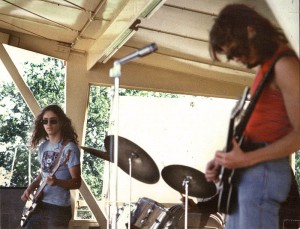
By 1976 I was back with Scot and yet another high school drummer he had met named Jim Widlowski. Jim could play just about anything, including jazz and jazz-fusion. Though Jim’s participation in this line-up, then christened Grey Mist, would be short-lived, he would leave a lasting impression and I would seek him out decades later as I was conceptualizing Pox. We played covers of Uriah Heep, Budgie, The Who and the odd original with Scot once again (and perhaps for the last time) on lead vocals. Along with drummer Harry Benstien, we played a couple of local Battle Of The Bands and spent a good deal of time in Harry’s basement. Harry had a wonderful dark basement with a built-in stage and multi-colored lights which became a Mecca for all the neighborhood musicians who wanted to stop by and hone their skills. These were very formative years in both my own and Scot’s musical development, though eventually it would come to an end as Scot began to gig regularly with Qou Vadis, a horn-based cover band that also featured Jim.
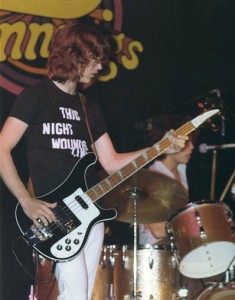
Just out of high school, I answered an ad from guitarist George Schmidt in Skokie and joined a (primarily) cover band we would eventually call Bloxx (not my idea). The line-up initially featured keyboard virtuoso Russell Stern (playing well below his abilities) and in its final incarnation, returning drummer Bruce Akers. It was with Bloxx that I first set foot inside a professional studio, (Hedden West in Schaumburg), to record my first naive attempt at semi-prog – a 4-minute, multi-sectioned opus called “Dementia”. Engineered by Iain Burgess (who would later become a punk/new wave favorite), the song did feature one very significant innovation – a brief poly-metric section of 6/8 against 4/4. The seed had been sown!
When Bloxx disbanded in 1978 I resumed working with Scot and Brad in what started out as a series of very loose (and often lengthy) free-form jams. Initially called Athens, we would later change our name to No Apology. Anything was fair game. Metal chairs, wind chimes, tapes – whatever was at hand. An electric version of “All Blues” entered our repertoire along with bits of Coltrane and riffs from an LP of a local Egyptian orchestra purchased right off the street in Cairo. (One specific riff from this album would form a pivotal part of “Fat Dog’s Gonna Hatch” and give Scot his first co-writing credit in Cheer-Accident.) The improvs were amazing – the only rule being ‘listen’ – a lesson I took to heart and would serve me well into the present day. We were also writing a fair amount of original material, predominantly heavy guitar-based instrumentals such as “Just” and “Diet Of Worms”, both of which would be reinterpreted a few years later in Dot Dot Dot. Another song, Axiom Of Lies has even manged to survive all these years and in the opening track on Poiesis! We also began to experiment with home recording with Brad’s then state of the art Teac overdubbing cassette deck – which allowed a third track to be recorded directly over a stereo master. I had also discovered you could layer even more tracks by running the output signal to a second deck while playing a new track live – a method that was already in full swing just a few houses down and around the corner from where we rehearsed at the Jones residence. Eventually, Scot would purchase one of the original Tascam Portastudio 4-tracks, which we would also utilize to some degree. Unfortunately, though intense, these sessions were sporadic as Scot and Brad were both attending Northern Illinois University some sixty miles away in DeKalb. In the end, NIU would be the site of our only public performance (not counting some improv sets Scot and I did locally at local parties and open-mike nights) and one aborted studio session. By the early 80’s, both Brad and I were pushing Scot to take the band into the public circuit, but Scot had his reservations and soon I was looking for something new.
Little did I know how close it would be…
